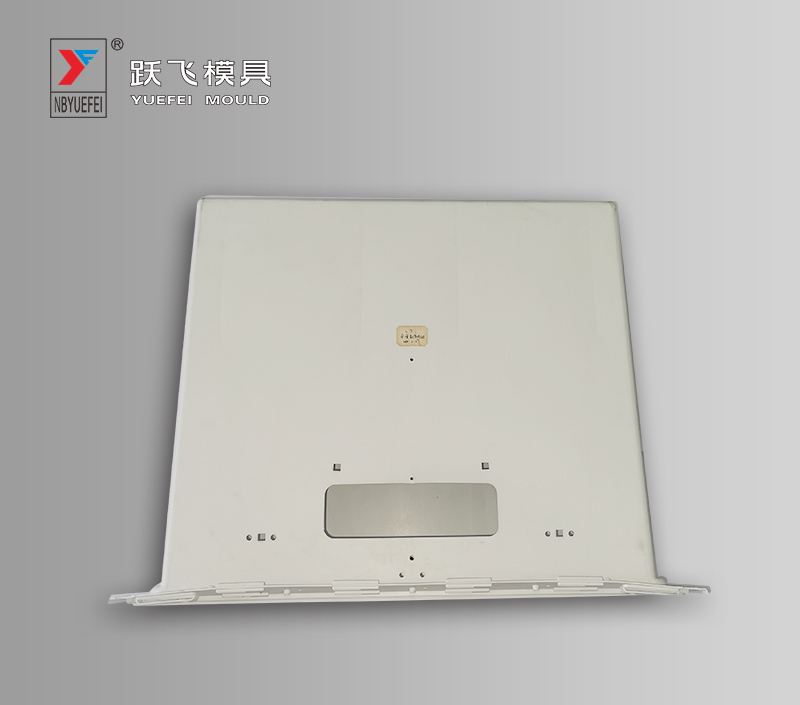Optimize mold design and process parameters, avoid unnecessary errors, achieve a multiplier effect, and meet the high-quality requirements of mass production. In this way, even if the materials, machine settings or environmental factors change, a stable and uninterrupted mass production environment can still be ensured. Most of the defects of molded products are caused during the plasticization and injection molding stages, but improper mold design and poor mold structure are the root causes! Trial mold influence factors: mold cavity number, cold/hot runner system design, injection inlet Type, location and size, as well as the structure of the product itself. Therefore, in order to avoid product defects caused by mold design, we need to analyze the mold design and process parameters when making the mold. It needs to be emphasized that the purpose and focus of mold trial is to optimize the mold and process to meet the requirements of mass production, not just to test out good product samples.
The first step: mold dry run test
1. Inspection of mold opening and closing under low pressure
2. Inspection of mold ejection system (under low pressure)
3. Inspection of mold reset
4. Check the movement of the row position (slider), mold dry run test
Step 2: Test the balance of the injection molding cavity
1. Continuously hit 5 molds in turn, and weigh their weight
2. Record the weight of each product in each mold
3. Reduce the injection volume and fill up 3 molds each with 20%, 50%, and 90% samples in sequence
4. Weigh and record the weight of each of the above products
5. If the difference between the maximum weight and the minimum weight of the product is less than 2% of the weight, it is acceptable-if the weight fluctuation error is within 2%, it indicates that the cavity is balanced, otherwise the injection is not balanced
6. If it is a single-cavity mold, it is also necessary to test the balance of the injection of glue (observe the actual situation of the glue).
The third step: the test of the holding time (gate freezing) time
1. When the pressure holding time is set to 1 second, 3 molds are formed each time
2. As shown in the table, increase the pressure holding time and reduce the cooling time in order to make the whole cycle unchanged (until the gate is frozen and sealed and the product weight does not increase) Ⅲ. Set multiple different as shown in the figure below Holding pressure time, each time forming 3 mold products, weigh the product weight in the specified cavity, and record the data in the table in turn. Ⅳ. Determine the better holding pressure time according to the chart.
The fourth step: the determination of a better clamping force
1. When the holding pressure switch position/holding pressure is set to the best, the clamping force is set to within 90% of the maximum clamping force, 3 molds are formed, and the weight of each mold product is recorded
2. The clamping force is reduced by 5Ton in turn, 3 molds are formed each time, and the product weight of each mold is recorded until the weight of the product suddenly becomes larger, and the weight increases by about 5% when flashing around the product begins to determine the better clamping force.
The fifth step: the determination of a better cooling time
1. When the injection molding process conditions are appropriate (after the product is full), estimate the cooling time (primarily choose a longer cooling time to completely cool the product), shoot 3 molds, and measure its size
2. Record the product size in the table and observe the deformation of the rubber parts. Ⅲ. Reduce the cooling time of the product by 1 second, and hit 3 molds. Ⅳ. Reduce the cooling time until the product begins to deform and the size begins to decrease. Ⅴ. Each cooling time The size of the injection molded product should be measured after the plastic part is fully cooled (about 15 minutes). Ⅵ. The basis for determining a better cooling time-the determination of a better cooling time considering the dimensional stability of the product
Step 6: Test the flow of cooling water
1. When the injection molding process conditions are appropriate (after the product is full), estimate the cooling time (primarily choose a longer cooling time to completely cool the product), shoot 3 molds, and measure its dimensions. Ⅱ. Record in the table below Product size, observe the deformation of the plastic parts
2. The product cooling time is reduced by 1 second, and 3 molds are used. Ⅳ. Reduce the cooling time until the product begins to deform and the size begins to decrease. Ⅴ. The product injected during each cooling time should be fully cooled after the plastic part is fully cooled ( It takes about 15 minutes) to measure its size. Ⅵ. The basis for determining a better cooling time-a test that considers the dimensional stability of the product and the flow of cooling water
Step 7: Test the uniformity of mold cooling
1. Use a mold temperature measuring instrument to measure the temperature of 10 points in each of the core and cavity, and record them in the table below
2. The difference between the actual temperature at each measurement point and the average value should be less than 2°C. If the difference from the average value exceeds 2°C, it indicates that the mold cooling effect is uneven, and the cooling system mold cooling uniformity test should be improved.
Step 8: Determine the best injection speed
1. Record hydraulic oil temperature, melt temperature and mold temperature
2. Set the end position of the sol first, and only use the first level of glue
3. Set the holding pressure and holding time to zero, and after determining the starting position of injection, gradually increase the injection speed
4. Adjust the injection speed and fill to 95% of the rubber part (observe whether there is any padding, leave a 5-10mm padding amount)
5. Record the highest injection speed reached when filling to 95% of the rubber part
6. Record the highest injection speed and peak pressure of injection in the "Injection Speed Analysis Data Sheet"
7. Gradually reduce the injection speed, increase the injection pressure, observe and record the peak injection pressure when the rubber is filled to 95% of the position
www.yfmould.com



 English
English 简体中文
简体中文 Español
Español Deutsche
Deutsche















